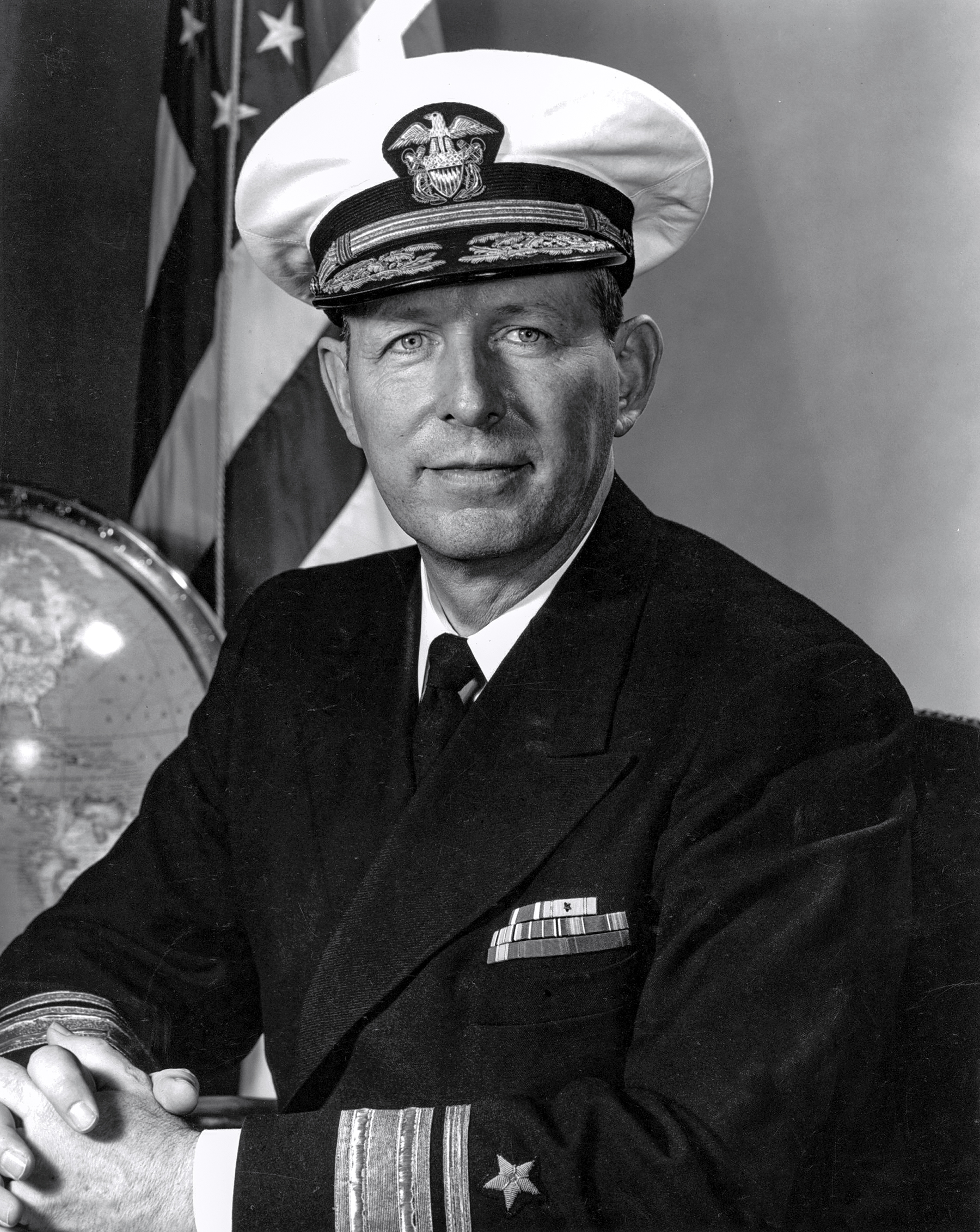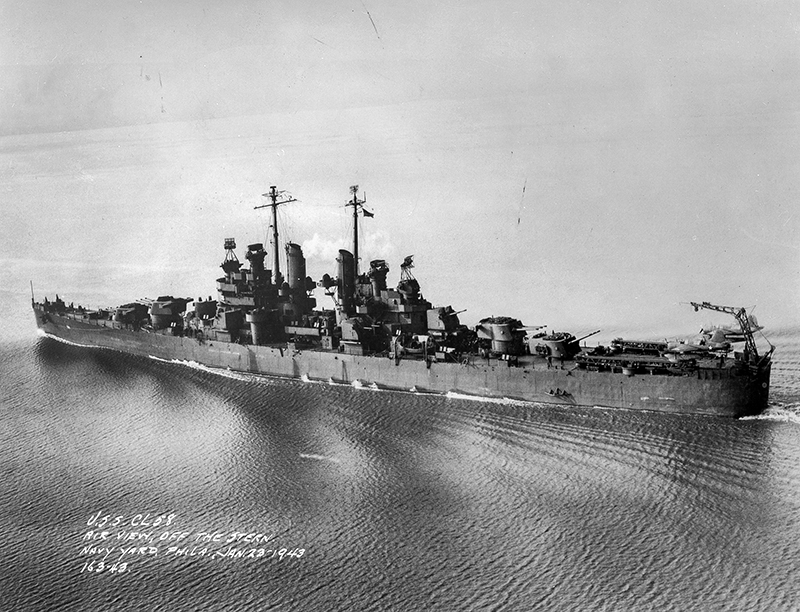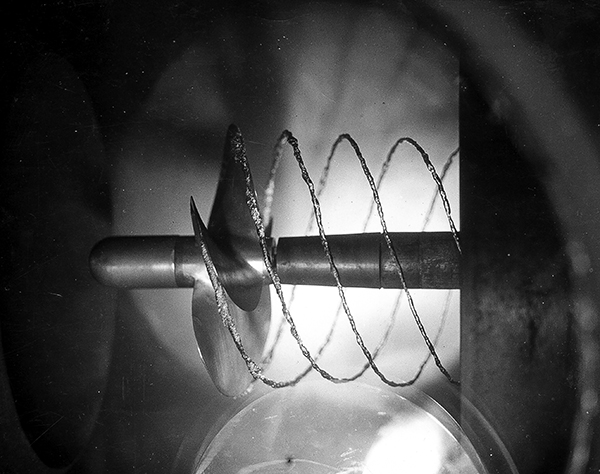
Mumma, Albert G., Rear Adm., USN (Ret.)
(1906–1997)
This is one of the most technical oral histories in the Naval Institute's collection because of Admiral Mumma's long service as an engineering duty specialist. After his graduation from the Naval Academy in 1926, he served in the light cruiser USS Richmond (CL-9) and armored cruiser USS Seattle (CA-11) before becoming a member of the first crew of the aircraft carrier USS Saratoga (CV-3) when she was commissioned in 1927. In the 1930s he served in the destroyers USS Waters (DD-115) and Clark (DD-361), sandwiched around postgraduate study in engineering in Annapolis and France.
As a result of his training, he decided to leave the unrestricted line and become an engineering specialist. He served in 1939-43 at the David Taylor Model Basin in Carderock, Maryland, and subsequently in the Bureau of Ships, where he ran the propeller desk. In 1944-45 Mumma was part of the Alsos Mission and Naval Technical Mission to ascertain German progress during World War II in technical development. In BuShips after the war he was involved with the origins of the Navy's nuclear power program; this oral history contains many candid comments about his relationship with Admiral Hyman Rickover. In the 1950s Mumma served at the San Francisco Naval Shipyard and later commanded the David Taylor Model Basin and the Mare Island Naval Shipyard. From 1955 to 1959 he was Chief of the Bureau of Ships and oversaw the development of many new vessels, particularly the adaptation of the teardrop-shaped hull to nuclear attack submarines and the design of the first ballistic missile submarines.
Interview
In this clip from his first interview with Paul Stillwell on 3 October 1986, Admiral Mumma recounts an incident when he was the engineering duty officer at the David Taylor Model Basin and went to the Philadelphia Naval Shipyard to check into a problem with the new Light Cruiser USS Denver (CL-58), commanded by future CNO Robert Carney.
Admiral Mumma: We had identified several problems with propellers that we were having, not only this vibration problem, but we also had a singing propeller problem, which was relatively unknown at that time. Nobody knew quite what a singing propeller was, if they had ever heard of it. But we found out by actually pinging on propellers in air that they would sing, they would vibrate. Then the frequency would change due to the mass of the entrained water, along with the mass of the blades. So we experimentally were able to produce a singing propeller. We soon found out that we had singing propellers on some of our submarines. They were making noise. Everybody used to say it was squealing shafts, but we found out it really wasn't squealing shafts at all. It was singing propellers, and the blades were vibrating.
This was caused by very, shall we say, slightly sloppy work on the finish of the propellers, not according to the design where the edges were made a little too blunt, and it would throw a vortex. This vortex would be the exciting force for the tips to start vibrating against the center of the blade. And that would cause a major singing effect at a specific frequency that was identifiable as such. It didn't change with RPM. A singing propeller would sing, starting out at, maybe, five knots, and going up through the whole range at the same frequency, only getting louder and louder and louder. So our phenomenon, after identification, was easily fixed. All we had to do was to be extremely careful about the very accurate, precision-like work on the blades so that they didn't throw these vortices. We also attempted to design the blades themselves so that they wouldn't be so susceptible to this singing. One of the things we did with submarines, particularly, we skewed the blades, tilted them back, made them scimitar-like in shape. That scimitar-like shape gave a much more gradual entry of the tips into the water that it was to push against. Therefore, it didn't cause as much of an exciting force on the center of the blades, and the blades weren't as much drum-like as they had been. A drum-like blade will have a tendency to vibrate against the edges much more than one that is scimitar-shaped.
Paul Stillwell: By drum-like, you mean more rounded?
Admiral Mumma: Yes, right.
Paul Stillwell: Could you repeat that story about Carney and his cruiser, please?
Admiral Mumma: Yes. Well, another example of that singing was when Captain Carney had command of one of the cruisers.[1] I was called up to Philadelphia Navy Yard because they had a problem. They said they had shaft squeal and that this would take anywhere four to six weeks to repair—take the shafts out, realign the shafting, and so forth, the bearings, and reinstall. Well, I suspected that we didn't really have shaft squeal. So I had taken some instruments up with me to measure frequency. I said to Captain Carney, “Captain, if you'll take the ship down Delaware Bay a little ways, and maybe we may have to go out into the ocean, depending upon what speeds we have to make. But I would like to control the speed from the engine room if you don't mind, up to a degree. If you have to go beyond, or change that speed, just go ahead and do it. But I would like to cover the range of speeds of the shafts through, up to not full power, but medium power.”

He said, “Okay.” We got about halfway down Delaware Bay when I learned that she had singing propellers. The singing propellers were characterized by a single frequency just getting louder and louder with increased shaft rotation, which eliminated the shaft as the cause of the problem, because it wasn’t at shaft frequency. It was another finite frequency which must be singing. So I went up and told the captain, “Captain, we don't have to go any higher. We can turn around and go back to the yard. What we'll do is take your propellers off. We'll work on them overnight. We may get your propellers installed by tomorrow some time, and we will have you ready to go the following day, I suspect.”
He said, “My God, Mumma. You mean to tell me you're not going to take four to six weeks?”
I said, “No, sir, you've got singing propellers, and they're pretty easily fixed. We fixed submarines. We fixed a lot of ships with them.” So, sure enough, that's what happened. I stayed with the job, oversaw the work, and made sure the propellers were satisfactory when they went back on the ship. Went to sea with him the following day—quiet as a church. Well, he was overjoyed, of course, and he went to sea happy to fight the wars. It may not have been by accident that he was Chief of Naval Operations when I was made Chief of the Bureau of Ships. I don't know.
[1] Captain Robert B. Carney, USN, was the first commanding officer of the light cruiser Denver (CL-58) when she was commissioned on 15 October 1942. As an admiral Carney was Chief of Naval Operations from 1953 to 1955.
About this Volume
Based on five interviews conducted by Paul Stillwell from October 1986 through September 1988, the volume contains 297 pages of interview transcript plus an index. The transcript is copyright 2001 by the U.S. Naval Institute; the interviewee placed no restrictions on its use.




